Your 19-day fantastic Tibet tour of China will begin from the Pearl of the Orient - Hong Kong. Whether it’s Victoria Peak or Victoria Harbor, you won’t be disappointed with Hong Kong attractions and cuisine. Yunnan sightseeing and Tibet journey are also the essences in this itinerary. Step into the picturesque Yunnan Province, you will enter a world of paradise, where you will admire the stunning ear-shaped Erhai Lake and explore the splendid Jade Dragon Snow Mountain. You can also immerse yourself in this sacred and mysterious Tibet vacation. During this Tibet tour, you will meet the surgy Yarlong Tsangpo River at the highest altitude and explore the most mysterious Chinese Palace-Potala Palace. In addition to that, you will be able to have a close encounter with the characteristic Tibet arts and crafts, which will bring you into a new world. The last stop of this China Tibet tour is Beijing. You will visit the magnificent Forbidden City and the majestic Great Wall, making your trip to China worthwhile. Do not hesitate any more and you are just one click away from your China Tibet Tour!

Welcome to Hong Kong! Hong Kong is a vibrant city and a major gateway city to China. Hong Kong has a subtropical climate with sunny, warm, and dry weather in the fall, slightly cold and dry weather in the winter, warm and humid weather in the spring, and hot and rainy weather in the summer. You can choose your favorite season to visit Hong Kong. Hong Kong is a metropolis that preserves Chinese culture while guiding international trends. The people here are busy and hardworking, but they also enjoy life. It is a place where the East meets the West, where the past meets the present, and where all kinds of collisions create sparks that can only be appreciated by experiencing them firsthand.
Upon arrival and after clearing Customs and Immigration you will be picked up and transferred to your hotel. The guide will help you to check in and the rest of the day is free to enjoy on your own.
Free Time Suggestion: When you come to Hong Kong for shopping, you're sure to come back with fruitful results! Here you will find the most fashionable clothing, accessories, jewelry, watches, and electronics. If you want to buy top brands, many large shopping malls will let you shop around such as Harbor City, K11, DFS, 1881 Heritage, and Pacific Place. If you want to find special products, themed shopping streets and open-air bazaars are perfect for treasure hunting. The most famous shopping streets are Temple Street Night Market, Ladies Market, Jade Market, Stanley Market, etc.
Today your guide will meet you at your hotel and show you around Hong Kong! You will see both the must-see around the city as well as having time to get off the beaten path and see what the locals enjoy. First, you will visit Victoria Peak. The Peak is one of Hong Kong’s most popular attractions and an ideal place to get a bird’s eye view of the magnificent harbor and city. The movie "Soldier of Destiny" and the American drama "Love Boat" were both filmed here. The vintage red tram to the summit of the Peak is the preferred mode of transportation for most people. The 1.4-kilometer tram slowly ascends from the base of the mountain to the top in seven minutes and it’s amazing to feel the whole world tilting up when you ride it. Strolling along the peak, you can see skyscrapers, the world-renowned Victoria Harbor, and the refreshing green hills. At an altitude of 428 meters, the Sky Terrace in the Peak Tower on top of the peak offers great views. Standing on the observation deck, taking a photo with the brilliant view of Victoria Harbor behind you is one of the things every visitor will do here.
Next, we will have a short visit to Repulse Bay. Repulse Bay is located in the south of Hong Kong Island and is known as the "Hawaii of the East". With its clear waters and soft sandy beaches, it has always been one of the most popular swimming beaches in Hong Kong. Repulse Bay is not only a famous attraction in Hong Kong but also a high-class residential area. Many celebrities have lived here, such as Jackie Chan. The feng shui (Chinese Geomancy) here is so good that almost every rich tycoon in Hong Kong wants to own property in Repulse Bay. There is also a Tin Hau Temple in Repulse Bay. This temple, with its back to the mountain and face to the sea, blesses the fishermen not to encounter wind and waves and return safely. Many people still come here to make wishes and pray for good fortune. There is a bridge in front of Tin Hau Temple, called Longevity Bridge. It is said that every time you walk on the Longevity Bridge you can extend your life by three days!
Then we will visit Aberdeen Harbor by sampan. The Aberdeen Typhoon Shelter is home to people on the water, and some fishing village residents still maintain their traditional way of life with their fishing boats. We will see the fishing boats moored at the typhoon shelter by sampan. There are also many luxury yachts moored here. During traditional Chinese festivals, the fishermen gather in the typhoon shelter for celebrations.
After that, we will go to Stanley. Stanley is a scenic town in the south of Hong Kong Island, a great place for Hong Kong people to spend their leisure time. The beautiful sea view, unique architecture, and lively shopping streets here are particularly attractive. A must-visit place in Stanley is the Stanley Market. It is a popular holiday market for Hong Kong locals. It’s not as noisy as the Mongkok Ladies’ Market and is mostly filled with small shops. There are also a variety of artisanal shops selling leather, handicrafts, paintings, and crafts.
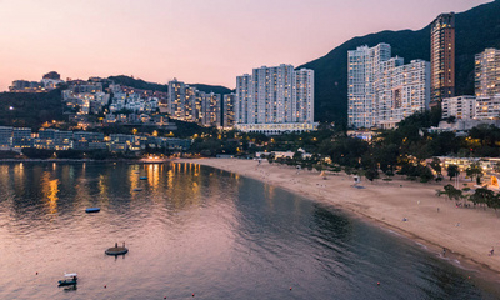
This morning, we will take around half an hour to go to Lantau Island. Lantau Island is the largest island in Hong Kong and is known as the back garden of Hong Kong. There are many tourist attractions on Lantau Island. You could enjoy natural countryside scenery, see the traditional fishing villages, relax at an amusement park, and admire the famous religious sights such as the Po Lin Monastery and the Big Buddha. Upon arrival at the Tung Chung Cable Car Station, you will first take the Ngong Ping 360. The Ngong Ping 360 has been ranked as one of the top 10 of the world’s best cable car rides by CNN and is one of Hong Kong’s most popular attractions. The Ngong Ping 360 Cable Car is 5.7-km long and each journey takes about 25 minutes. Along the way, you can enjoy breathtaking panoramic views of the mountains and the sea.
Once you get off the cable car, there is the famous Ngong Ping Village. This place combines the cultural characteristics of Lantau Island, offering an experience of shopping, dining, entertainment, and more.
Continue to move forward and we will arrive at the Po Lin Monastery. Po Lin Monastery was founded in 1924 and has a history of about 100 years. It is not only the iconic landscape of Hong Kong but also a very famous Buddhist temple in Hong Kong. Opposite the Po Lin Monastery is the famous Big Buddha. You must have seen people posing in front of a Buddha statue on Instagram. As one of Hong Kong’s famous landmarks, this Buddha statue is a must-see when you visit Hong Kong. At 34 meters tall, the Big Buddha is the world’s tallest open-air bronze seated Buddha. It is located at the top of Mok Yue Peak on Lantau Island and is 482 meters above sea level. On either side of this Buddha statue, twelve other statues are guarding it, and each statue symbolizes one of the twelve animals in the Chinese zodiac.
After visiting Lantau Island, your guide will take you back to the hotel, and you can enjoy your free time.
Free Time Suggestion: Hong Kong's nightlife is fun, friendly, and diverse. The moment the sun sets, you will find the city’s spectacular view on Victoria Harbor and many other places. Lan Kwai Fong is the stronghold of hip Hong Kong nightlife, with its streets filled with bars and restaurants. Most of the bars here are small, with only a few dozen seats. The bars are not extravagant, but the decor is unique and each has its style. A Symphony of Lights show is also well worth a look. This iconic show may not be your first choice over the bars, but if it's your first time in Hong Kong, don't miss it. If you could arrive at Tsim Sha Tsui Promenade or Golden Bauhinia Square before 8 p.m., you will enjoy this stunning view.
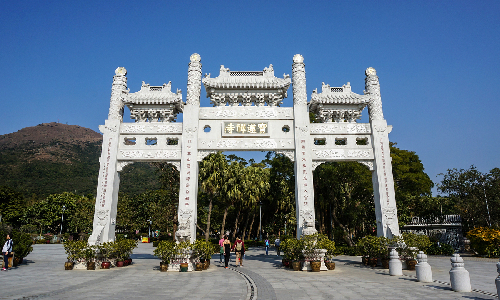
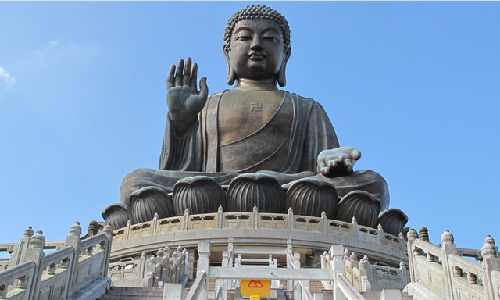
 Guangzhou
Guangzhou This morning we will drive to the train station, and you will take the estimated train G408 12:05/13:04 to Guangzhou. Passengers can go through the security and customs clearance procedures as early as 120 minutes before departure. In general, all relevant procedures can be completed in 30 minutes. It may take longer on holidays and ample time needs to be allowed. You will proceed from the B1 ticketing lobby for real-name verification, followed by baggage and security checks. Then you will proceed to B3 Departure Hall to complete the Hong Kong and Mainland China clearance procedures in one go. Finally, you will board the train at B4 Floor.
After you arrive at Guangzhou train station, the guide will meet you and take you to your hotel. The afternoon is free on your own.
This morning we will have a day tour in Guangzhou. You will first see the Five Sheep Statue. The Five Sheep Statue, a landmark of Guangzhou, stands at the top of the hill in Yuexiu Park. The statue was built in 1960 and is made of 130 pieces of granite and weighs several hundred kilograms. The whole statue is composed of a mother sheep with ears of rice in her mouth and four lambs of different shapes. Legend has it that in ancient times, five Gods wearing multicolored clothes and riding on multicolored immortal sheep brought rice to the people of Guangzhou to keep them warm and fed. That's why Guangzhou is known as the "City of Sheep". The statue of the five sheep has naturally become the symbol of Guangzhou and is a must-see place for visitors to Guangzhou.
Then we will drive you about 1 hour to visit Sun Yat-sen Memorial Hall, which was built by the people of Guangzhou and overseas Chinese to commemorate Dr. Sun Yat-sen. It is a grand, magnificent, octagonal palace-like building. The Sun Yat-sen Memorial Hall was designed by Mr. Lv Yanzhi, a famous architect in China. There is also a short story about the design drawing of the memorial hall. Lv Yanzhi died of intestinal cancer at an early age because he had worked long and hard. It is a pity that he did not see the completion of the Memorial Hall. After his death, his assistant, Huang Tanfu, took over the custody of the design drawings of the Sun Yat-sen Memorial Hall. Later, due to poverty, Huang had to sell the drawings as scrap, and then the design drawings thus disappeared. In 1961, the Guangzhou Municipal Archives Bureau got the news that a batch of design drawings of the Sun Yat-sen Memorial Hall was found in a scrapyard in Shanghai. Due to improper storage, the drawings were damaged. To restore the drawings, the Guangzhou Municipal Archives Bureau sent them to Beijing at great expense and asked the most famous cultural relics restoration experts at that time to do the restoration, which finally enabled the drawings to be preserved intact.
After lunch, we will visit the Canton Tower. Canton Tower is a landmark in Guangzhou. It is 600 meters high and is the tallest tower in China. There are two viewing platforms in the Canton Tower. Both platforms are equipped with transparent glass, which provides a beautiful view of Guangzhou and the Pearl River. Each of the two viewing platforms also has a suspended corridor. When you look down, it gives you a thrilling feeling like never before. If you are a photographer, you will love the 488-meter outdoor viewing platform. With an open 360-degree view, it is a great place to take pictures of the city. At night, the Canton Tower will be lit up, so even if you don’t ascend the tower, you can still come here to photograph the exterior.
After today’s tour, you will be transferred back to the hotel.
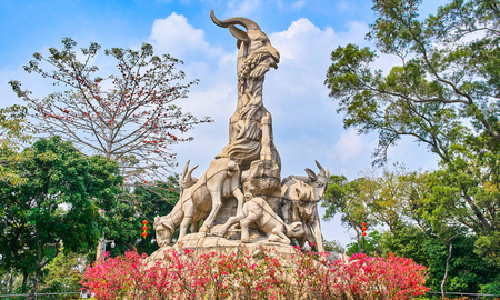
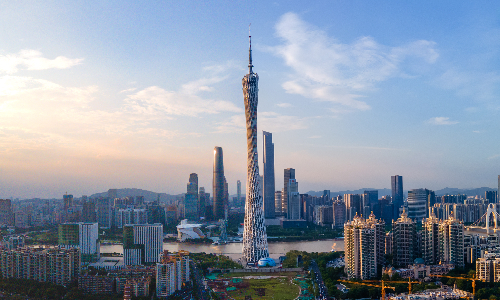
 Kunming
Kunming This morning you will take the estimated flight CZ3415 11:10/13:40 to Kunming. Kunming has a northern subtropical low latitude highland mountain monsoon climate with an annual average temperature of 16.5℃ (61.7 ℉), and the weather is as pleasant as spring throughout the year. Therefore, it is also known as the "Spring City". Kunming is a multi-ethnic city with 26 ethnic groups living in the city. In the long period of living together, all ethnic groups have influenced each other while maintaining their ethnic traditions. Kunming people are hospitable, can sing and dance well, and have simple folk customs. You can feel the distinctive ethnic characteristics in the rituals, the delicious food, the colorful costumes, the different styles of residential buildings, and the unique marriage ceremony.
When you arrive in Kunming, your guide will be waiting for you in the arrival hall. Then the tour guide will take you directly to the hotel to check in. You are free to spend the afternoon at your leisure.
This morning we will drive east to visit the most famous site in Kunming--Stone Forest. It takes about one and a half hours (76 km) to get from downtown Kunming to Stone Forest. The primary type of geological relics in Stone Forest Geological Park is karst geological landscapes. It preserves and shows the most diverse karst forms, and the tall sword-shaped, pillar-shaped, mushroom-shaped, tower-shaped, and other limestone pillars are the typical scenes of the stone forest.
In the afternoon, we will drive back to Kunming and visit the Yuantong Temple. Yuantong Temple is one of the oldest Buddhist temples and the largest temple in Kunming. It was built 1,200 years ago. In the main hall of Yuantong Temple, there are two clay dragons, one red and one blue, coiled high on the pillars, standing to the left and right of the Buddha. Their heads are raised, their tails are cocked, their eyes are wild-eyed, and their claws are stretched out toward each other. The two clay dragons are so lifelike that people are intimidated. There are many unanswered questions about the Yuantong Temple. For example, in the feudal era with a strict hierarchy, why did the dragon pillar, a symbol of imperial power, appear in the temple? All these are waiting for you to explore.
After the visit, your guide and driver will escort you back to your hotel for a good rest.
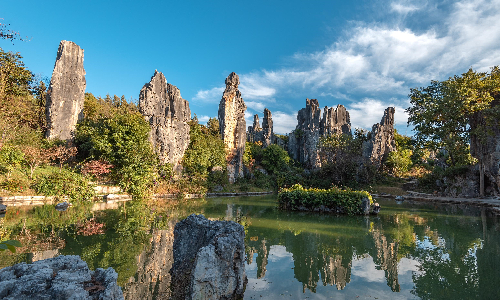
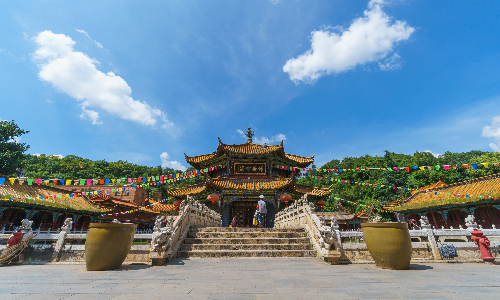
 Dali
Dali After your breakfast, the guide will take you to the train station and take the estimated train D8672 09:24/11:24 to Dali. Dali is a thousand-year-old city, which was the capital of the Nanzhao Kingdom in the Tang Dynasty and the Dali Kingdom in the Song Dynasty. Dali is also one of the most popular tourist destinations in Yunnan. Its beautiful scenery and unique culture attract people from all over the world to visit the city. Dali is suitable for you to visit all year round. From March to May, the temperature is comfortable, and many Bai festivals will be held in this period. From June to August, the rainy season, the sunshine is enhanced, and this time is the peak of the azalea blooming. The period from September to November is the photographers’ favorite. From December to February, you can climb snow-capped mountains and watch migratory birds.
Upon arrival, your Dali guide will be waiting at the arrival hall with a sunny smile. Then your Dali tour will start. We will drive about half an hour to Erhai Lake, and you will take a cruise on the lake. After that, we will drive 33 kilometers north to Xizhou Ancient Town. It takes about one hour. You may see Bai people’s Tie Dying Cloth with Wax there. And if you like, you can also experience making and tasting the “Bai pizza”-Xizhou Baba. On the way back hotel, we will visit The Chongsheng Temple and the Three Pagodas. Chong Sheng Temple was a royal temple during the Dali Kingdom, and it is the first and most grand ancient temple in the history of Dali. The Three Pagodas building group is a symbol of ancient history and culture in Yunnan Province. It is also one of the oldest and most majestic building groups in southern China.
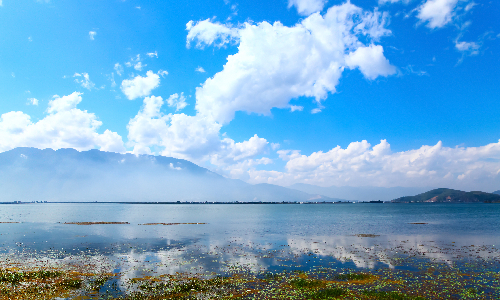
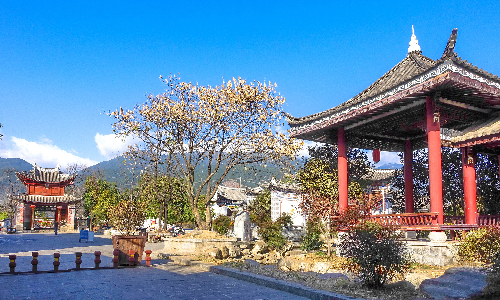
 Lijiang
Lijiang This morning we will drive 3 hours to the north from Dali to Lijiang (about 160 kilometers). After arriving in Lijiang, we will first visit Lijiang Ancient Town. This town is one of the most famous towns on the Ancient Tea Horse Road. In the ancient town, the wooden buildings, old streets, stone alleys, small bridges, and flowing water are worth seeing. Standing on the east road of the ancient town, you can see the Jade Dragon Snow Mountain. Many shops dealing in specialty products from all over the world are on the road. You could find ethnic ornaments, tea, silverware, shawls here. Also, there are many restaurants here, whether it is the local flavor or western pizza. Everything will make your mouth watering. Then we will visit the Black Dragon Pool Park that is the of the most photographed spots in Lijiang by tourists. In the park, you can photograph the beautiful Jade Dragon Snow Mountain, view the many ancient buildings, and climb up Elephant Mountain overlooking the Lijiang Ancient Town.
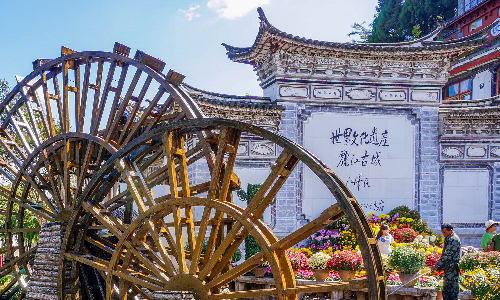

Today we will visit the Jade Dragon Snow Mountain, the Baisha Murals, and the Shuhe Ancient Town. In the morning, we are driving 20 KM north to visit Jade Dragon Snow Mountain. Jade Dragon Snow Mountain is not an independent snow mountain. There are 13 linked peaks and the highest one is 5,596 meters above sea level. It is the sacred mountain in the hearts of the Naxi people. The 4,680m glacier park is the worthiest attraction of Jade Dragon Snow Mountain and the most visited attraction. Baisha Murals is a product of the opening of the Naxi society in the Ming Dynasty. Its drawing has continued for more than 300 years since the early Ming to the early Qing dynasty. Shuhe Ancient Town is in the northwest of the Lijiang Ancient Town. The mountains behind the town are the remnants of the Jade Dragon Snow Mountain. The large stone bridge and the Dajue Palace in the town are well preserved. Tonight, you will spend the night in Lijiang.
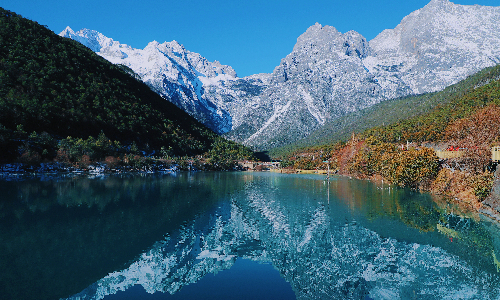
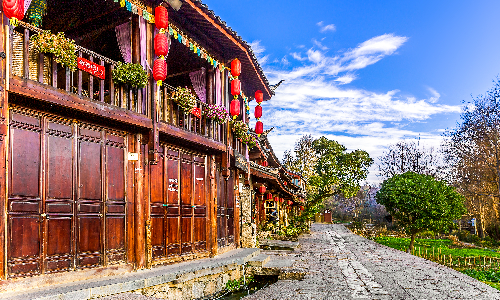
 Kunming
Kunming In the morning, we will drive about 1.5 hours (87 kilometers) to the southeast to visit Tiger Leaping Gorge. It is one of the deepest and narrowest canyons in the world. There are two snow-capped mountains on two sides of the canyon, with Haba Snow Mountain on the left and Jade Dragon Snow Mountain on the right. The height difference from the bottom of the gorge to the top of the mountain is more than 3,000 meters, and it is more than 1,500 meters deeper than the Grand Canyon of Colorado in the United States.
After lunch, you will take the estimated train D8790 16:42/19:58 back to Kunming. After your arrival, the guide will take you to your hotel directly.
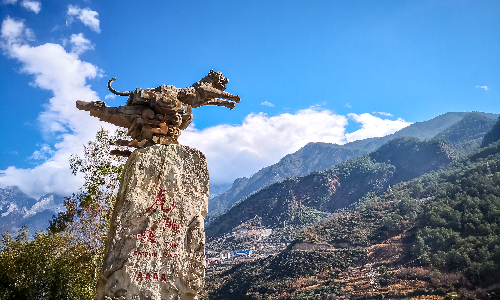
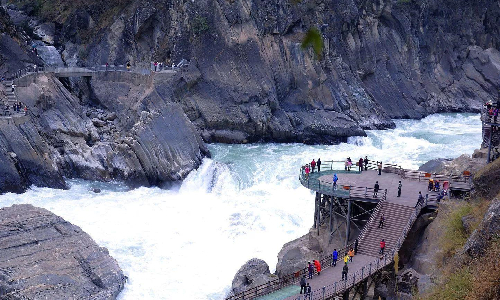
 Lhasa
Lhasa In the morning, we will first visit the Dounan Flower Market that has developed into the largest cut flower market in Asia and is called the flower capital. After that, we will visit Guandu Ancient Town that is the birthplace of Dian culture. There are numerous cultural monuments and rich cultural landscapes of Tang, Song, Yuan, Ming, and Qing dynasties in the town. Kunming Shaolin Temple is also here. You will find the most authentic Yunnan snacks here, and you may have a chance to see traditional Yunnan opera performances. After lunch, you will take the estimated flight MU9737 15:05/18:10 to Lhasa.
Upon your arrival at Lhasa airport, your guide will meet and welcome you at the arrival hall and take you to Tsetang. It takes about 1.5 hours. Along the way, you will enjoy quite attractive views along the Yarlong Tsangpo River. The Yarlong Tsangpo River basin is rich and beautiful, feeding the fertile land on both sides of the river, and is the cradle of the Tibetan culture. It is the seventh-largest river in China and the highest river in the world. You could have a good rest at the hotel and acclimate yourself to the high altitudes.
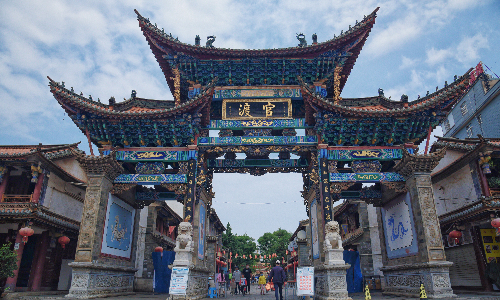
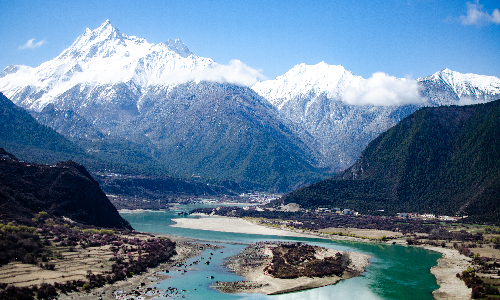
 Lhasa
Lhasa In the morning, your guide will escort you to visit Yunbulhakang Palace. It is the palace where the first Nirchizamp of Tubo (633-842) lived and has a history of over 2,000 years. In the beginning, Yunbulhakang Palace was a small palace, but it was expanded by the 5th Dalai Lama and gradually became a Buddhist monastery. Then you will visit Trandruk Monastery. It is 2 KM south of the town of Tsetang. It is a Gelugpa monastery and the first Buddhist monastery in the history of Tibet. It is said that Princess Wencheng has come here to practice. The pearl thangka of the monastery is very famous and attracts many devotees and tourists to pay homage to it. Next, we will visit Samye Monastery. Samye Monastery is at the northern bank of the Yarlung Tsangpo River under the Haba Mountain. The decoration of the central hall has three styles: Tibetan, Chinese, and Indian. That is why Samye Monastery is also known as the Three Styles Monastery. After today’s tour, we will transfer back to Lhasa. It takes about two and a half hours from Tsetang to Lhasa.
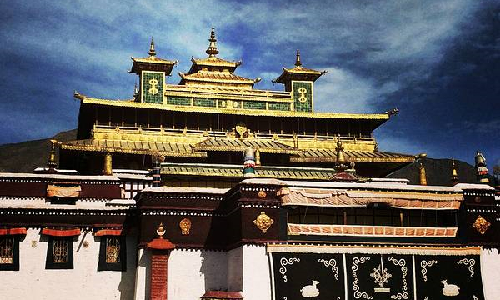
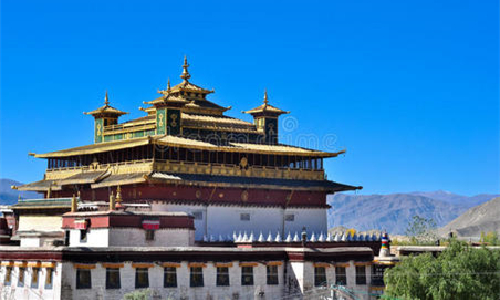
This morning you will first visit the Potala Palace. It is on the Red Hill of Lhasa and was built during the Songtsen Gampo period. It used to be the political and religious center of Tibet. The Potala Palace is a famous Tibetan-style palace and an outstanding representative of ancient Tibetan architecture. It enjoys the reputation of “a pearl on the roof of the world”.
And then, we will drive to Jokhang Temple that is the oldest Sino-Tibetan building in Tibet with a wooden structure that imitates the Tang style. The main building of Jokhang Temple is the scripture hall. The 4-storey hall is in Chinese style, with typical Tibetan decorations on the pillars and eaves. The Buddha Hall and the surrounding corridors are full of painted murals, covering more than 2,600 square meters. The subjects of the murals include Buddhism, historical figures, and stories. Besides, there are a large number of valuable cultural relics in the temple. The “Monument of Tang and Tibetan Alliance”, standing in front of the temple, is a historical witness of the friendship between the Chinese and Tibetan peoples.
After visiting the temple, you will visit Barkhor Street. Barkhor Street is a thousand-year-old street in the old city of Tibet where you can find traditional Tibetan architecture, devout Tibetan Buddhists, and small shops full of Tibetan atmosphere. Barkhor Street still maintains a rich religious, historical and cultural landscape and is known as one of the “Top Ten Historical and Cultural Streets in China”.
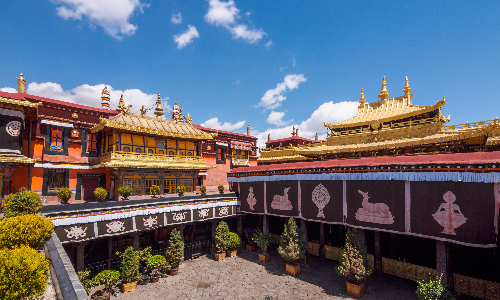
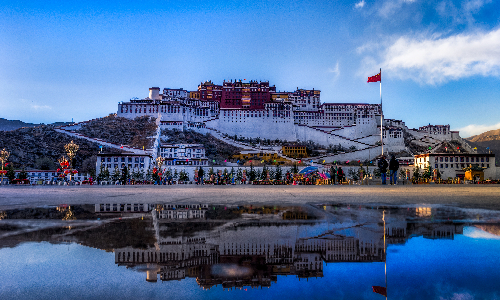
In the morning, we will visit Norbulingka that is in the western suburbs of Lhasa. Norbulingka is now also known as the People’s Park. It is one of the largest and most beautiful gardens in the history of Tibet and contains a large number of monuments and treasures. Then we will drive southwest for two hours (about 101 kilometers) to Yamdrok Lake. Yamdrok means “swan lake” in the Tibetan language and is one of the three sacred lakes in Tibet. The Yamdrok Lake looks particularly beautiful from a distance. We can drive pass the 5,030-meter mountain pass and then drive along the road down to Yamdrok Lake. Along the way, there are many viewing platforms. You can stop to take pictures. After the visit, we will transfer back to the hotel.
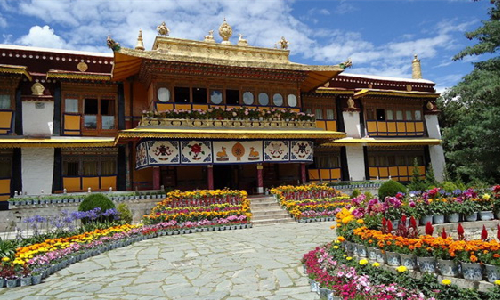
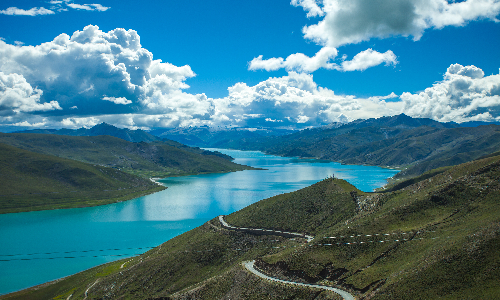
 Beijing
Beijing This morning you will take the estimated flight TV9815 09:30/13:25 to Beijing. After arrival in Beijing, our guide will pick you up at the airport and take you to the hotel directly. You can enjoy a free afternoon on your own.
This morning your Beijing tour will start from Tian’anmen Square. Tiananmen Square is in the center of Beijing, and it is the largest city center square in the world. The Tiananmen Gate Tower is the main building of Tiananmen Square, and it was originally the main gate of the imperial city in the Ming and Qing dynasties. There are 60 giant pillars painted with traditional Chinese auspicious motifs and golden dragons. The doorway in the middle of the tower is accessible only to the Emperors in ancient times.
After passing through the tower and the Meridian Gate (Wu Men), we will see the Forbidden City (Closed each Monday). There are four gates in the Forbidden City, and you will find a graceful turret at each of the four corners of the city wall. There are two parts of Forbidden City: the outer court and the inner court. The center of the outer court is the Hall of Supreme Harmony, Complete Harmony, and Preserving Harmony, collectively known as the Three Great Halls that held significant ceremonies of the country.
After lunch, we will visit the Summer Palace. The Summer Palace is one of the best-preserved imperial gardens in Beijing. The crafty-designed promenade and the spectacular 17-hole bridge depict the elegant and dignified style of the royal gardens. Kunming Lake is the main lake of the Summer Palace, accounting for three-quarters of the park’s area. If you like, a boat trip is also your best choice to visit the Summer Palace.
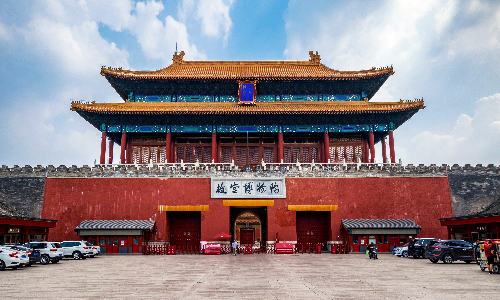
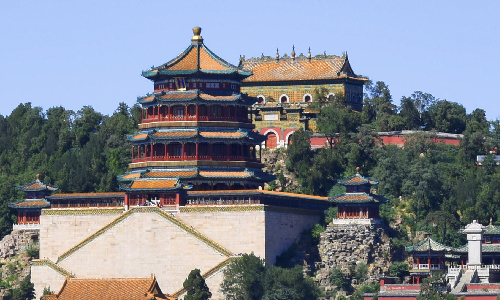
This morning we will first visit the Temple of Heaven. The Temple of Heaven was a place where emperors of the Ming and Qing dynasties offered sacrifices to the heaven, prayed for rain, and prayed for a good harvest. The park has verdant ancient trees, grand ancient buildings, and green grass. In the morning at Temple of Heaven, you can see many residents playing Tai Chi and poker in the promenade at the east gate.
After that, we will drive for about 1.5 hours (63 kilometers) to the northwest to visit the Ding Tomb of the Ming Dynasty 13 Tombs. Ding Tomb is a mausoleum museum in China. The Ding Tomb was first built in 1584 and completed in 1590. A total of 2,780 artifacts were unearthed from the underground palace. Among these burials, the emperor’s golden crown and the empress’s phoenix crown are the most famous unearthed relics.
After lunch, we will visit the Mutianyu Great Wall. Mutianyu Great Wall is located in the northeast of Ding Tomb and it takes about 1 hour by car. The Mutianyu Great Wall is the most beautiful place to photograph the Great Wall in Beijing in many people’s minds. The Great Wall at Mutianyu is also less difficult to climb, and the number of tourists is relatively small, allowing you to enjoy the scenery of the Beijing countryside. Cable cars, chairlifts, and toboggan are available here. Watchtower 14-20 is the best part to visit in the Mutianyu Great Wall.
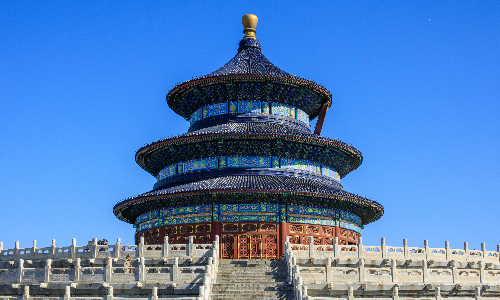
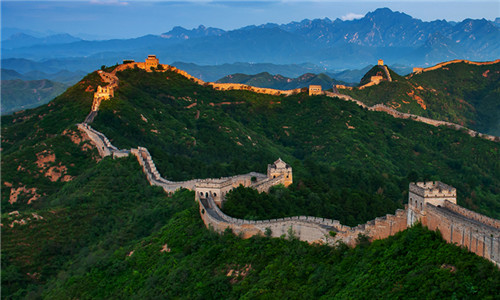
Your fantastic tour to China is coming to an end today. We hope we have given you great memories during these 19 days. Your guide will communicate with you in advance about the time of your transfer and accompany you to the airport to check in. We wish you a safe journey and hope to meet you again in China.
Editor: Carrie Zhang
Proofreader: Liz Lee
| City | Five Star hotel list | Four Star hotel list |
|---|---|---|
| Hong Kong | Harbour Grand Kowloon | Harbour Plaza North Point Hotel |
| Guangzhou | Baiyun Hotel | Hotel Landmark Canton Guangzhou |
| Kunming | Grand Park Kunming | UChoice Hotel |
| Dali | The One Hotels & Resorts | Landscape Hotel |
| Lijiang | Wonderport International Hotel | Lijiang Wangfu Hotel |
| Lhasa | Shangri-La Hotel, Lhasa | Thangka hotel |
| Tsetang | Shannan Tsetang Hotel | Shannan Tsetang Hotel |
| Beijing | Sunworld Dynasty Hotel Beijing Wangfujing | Sunworld Hotel Wangfujing |
 |
![]() About your child or infant, please contact us for a discounted price.
About your child or infant, please contact us for a discounted price.



We started with a few days in Beijing & ended in Shanghai, from where we visited the Forbidden City and Great Wall. In between we visited Terra Cotta Warriors Museum, Panda Base, Shanghai Disneyland.

We had a wonderful holiday in China which will remain long in the memory. China is a breathtakingly beautiful country full of splendid temples and palaces, mountains and rivers, peaceful rural scenes and bustling shopping streets.
 QUICK ENQUIRY
QUICK ENQUIRY